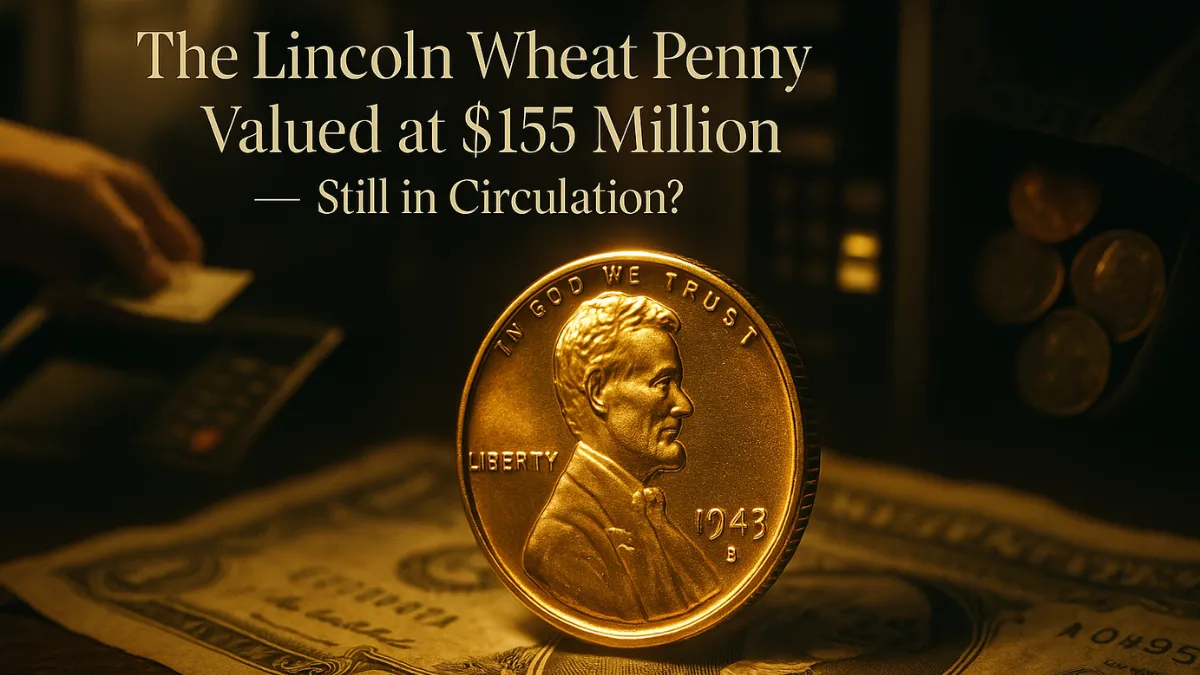For some fortunate collectors, this incredible scenario has become a reality thanks to the legendary Lincoln Wheat Penny. While most are common, a few rare varieties have fetched jaw-dropping prices—one particular version is valued as high as $155 million.
It might sound far-fetched, but rare minting errors and unique production changes during wartime led to these coins becoming hidden treasures. Incredibly, some could still be tucked away in homes across America.
A Brief History of the Lincoln Wheat Penny
Introduced in 1909, the Lincoln Wheat Penny was the first U.S. coin to depict a real person—President Abraham Lincoln—on its obverse. Created by artist Victor D. Brenner, the reverse side featured two wheat stalks curving along the sides to represent agricultural abundance and national prosperity.
These pennies remained in everyday circulation for nearly five decades. While billions were produced, a few rare editions born out of unusual minting circumstances have become prized collector’s items.
The $155 Million Penny: What Makes It So Special?
The most coveted Lincoln Wheat Penny is the 1943 copper version. During World War II, copper was diverted for military use, and the Mint started producing pennies from zinc-coated steel.
However, a few copper blanks remained in the presses, unintentionally creating a limited run of 1943 copper pennies. These accidental mintings are among the rarest U.S. coins ever made. While one sold for over $1.7 million, experts estimate a flawless one could reach $155 million due to its rarity, condition, and historical importance.
Why These Pennies Are So Valuable
The 1943 copper penny isn’t just valuable due to scarcity—it also represents a unique historical moment. As a product of a wartime mistake, this coin connects to America’s homefront story during World War II.
With so few authenticated examples, demand among collectors has remained intense. The mix of rarity, historical context, and collector competition fuels its astronomical value. It’s a symbol of how an ordinary-looking coin can hold extraordinary historical and financial weight.
How to Identify a Potentially Rare Lincoln Penny
Curious if you’ve got a valuable penny? Start by examining the date—1943 is the key year. Most were made of steel that sticks to a magnet, but copper ones will not. If your 1943 penny doesn’t respond to a magnet, it might be a rare find, though only expert analysis can confirm it.
Additionally, other valuable Wheat Pennies include the 1909-S VDB and the 1914-D. Mint marks like “S” (San Francisco) or “D” (Denver) under the date often indicate rare and desirable coins.
Where These Valuable Pennies Might Be Hiding
You don’t need to visit a museum to stumble upon rare coins—many people discover them in everyday spots. Old jars of change, inherited coin collections, or rolls of pennies from banks have occasionally revealed rare Wheat Pennies.
Estate sales, flea markets, and even garage sales are also prime locations where these hidden gems can appear. Though the $155 million penny is exceptionally rare, numerous other Lincoln Wheat Pennies can be worth hundreds or thousands of dollars.
What to Do If You Find a Rare Penny
If you believe you’ve found a rare coin, resist the urge to clean it—this can dramatically reduce its value. Instead, consult with a knowledgeable coin expert or send it to a professional grading service such as the Numismatic Guaranty Company (NGC) or the Professional Coin Grading Service (PCGS).
These services will verify the coin’s authenticity and assign a grade that determines its market worth. If confirmed as rare, auction houses that specialize in numismatics can help maximize your returns.
Why Collecting Wheat Pennies Remains Popular
Collecting Lincoln Wheat Pennies blends historical appreciation with the excitement of discovery. Some collectors are drawn to the coins as artifacts of America’s past, while others see them as long-term investments.
With dozens of variations, key dates, and mint marks to track down, the Wheat Penny series offers something for everyone—from novice hobbyists to seasoned numismatists. The rich history and diverse range of coins make this series endlessly fascinating and rewarding to explore.
Conclusion: A Life-Changing Coin Could Be Closer Than You Think
The possibility of uncovering a coin worth up to $155 million is both exciting and motivating. While the odds of finding a 1943 copper penny are incredibly low, many other valuable Lincoln Wheat Pennies still circulate today, often overlooked.
Whether found in a dusty jar or among inherited keepsakes, a simple penny could hold enormous value. So next time you encounter a Wheat Penny, take a moment to inspect it—it could be the start of an amazing discovery.
Disclaimer
This content is intended solely for educational and informational purposes. Coin values can vary widely based on condition, demand, and the current market. It is important to seek advice from a certified numismatist or trusted coin dealer for a proper appraisal. The historical facts and valuations discussed here reflect current expert opinions and may evolve as new discoveries are made.
FAQs
Q1: How rare is the 1943 copper Lincoln penny today?
Fewer than 20 genuine 1943 copper pennies have been verified, making it one of the most elusive and valuable coins in American numismatic history.
Q2: Can I check at home if a 1943 penny is copper?
Yes, use a simple magnet—steel pennies will stick, but copper won’t. Still, expert confirmation is necessary for any potential copper coin.
Q3: Why do mint marks affect a penny’s value so much?
Mint marks show where a coin was made. Some locations had lower output, making coins with certain marks far rarer and more desirable.
Q4: How can I safely have my old penny evaluated?
Submit it to professional grading services like PCGS or NGC. They authenticate and grade coins, helping determine true market value securely.
